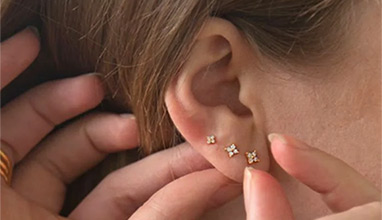Beauty Without Fear: How IV Sedation Helps Nervous Patients

For many people, visiting the dentist triggers intense anxiety. Nervous patients often avoid essential treatments, leading to worsening oral health. Modern dentistry offers an effective solution through sedation techniques that help patients relax while receiving care.
This article explores how sedation transforms dental visits for anxious patients, creating stress-free experiences while maintaining optimal oral health.
1. Eliminates Anxiety and Fear
Nervous patients often experience panic, racing thoughts, or physical reactions like sweating and trembling during dental visits. IV sedation for dentistry induces a profound state of relaxation, allowing patients to remain completely calm throughout their procedure. Unlike general anesthesia, patients maintain consciousness but experience no distress, making it ideal for those with dental phobia.
2. Provides a Pain-Free Experience
Many dental patients fear discomfort, but conscious sedation or moderate sedation ensures complete pain management. Even complex procedures like extractions, oral surgery, or root canals become comfortable experiences. This pain-free approach encourages patients to maintain regular dental treatment without apprehension.
3. Creates Time Distortion
Sedation alters the perception of time, making lengthy procedures feel surprisingly brief. Patients under intravenous sedation or oral sedation often report waking up feeling as though only minutes have passed, even after extensive treatments. This benefit is especially valuable for those requiring multiple or time-consuming procedures in the dental chair.
4. Suppresses Gag Reflex
Sedation naturally relaxes this reflex, allowing dentists to work more effectively. Patients with strong gag responses find procedures like impressions or back tooth work much easier under conscious sedation or moderate sedation, improving comfort and efficiency.
5. Stabilizes Stress Responses
Dental fear often triggers physical reactions like increased heart rate and blood pressure. Sedation eliminates stress. It helps regulate these responses, creating safer treatment conditions. A pulse oximeter monitors oxygen levels, ensuring patient safety, especially for those with medical conditions exacerbated by stress.
6. Enables Multiple Procedures
Sedation allows dentists to complete several treatments in a single visit while keeping patients comfortable. This reduces the number of appointments needed—ideal for busy individuals or those with severe anxiety who prefer to minimize visits to dental offices.
7. Enhances Precision
When patients are relaxed and still under deep sedation or moderate sedation, dentists can work with greater accuracy. This leads to better outcomes for procedures requiring precision, like fillings or crowns, benefiting both the dental patient and the clinical team.
8. Reduces Procedure Memory
Many patients remember little to nothing about their treatment after sedation, a key advantage of this form of sedation. This amnesic effect prevents negative dental memories, making future visits less intimidating for anxious patients.
9. Offers Adjustable Depth
Unlike oral sedation, intravenous sedation allows real-time adjustment of the level of sedation. Dentists can tailor the experience to each patient’s needs, ensuring optimal comfort and safety during dental treatment.
10. Quick Recovery
Patients recover faster from sedation than from general anesthesia (often used in an intensive care unit), typically regaining alertness within an hour. While mild drowsiness may persist, most can resume light activities the same day, making sedation a practical choice for busy lifestyles. Now, people can manage self-care and wellness pain free.

Frequently Asked Questions (FAQs)
1. Will I be unconscious during treatment?
Sedation keeps patients in a deeply relaxed state while maintaining consciousness. You'll be able to respond to simple instructions but won't feel anxious or remember discomfort. This twilight state differs from general anesthesia where patients are completely unconscious.
2. How long do the effects last?
The primary sedative effects typically wear off within about an hour after treatment. Some patients may experience mild drowsiness for a few additional hours. All patients must arrange for transportation home as driving is prohibited immediately after sedation.
3. Who qualifies for sedation dentistry?
Good candidates include those with dental phobia, sensitive gag reflexes, or needing extensive treatment. Dentists evaluate medical history and current health status to ensure safety. Most healthy adults can benefit from sedation options.
4. Are there any side effects?
Most side effects are mild and temporary, including slight drowsiness or dry mouth. Nausea occurs rarely and typically resolves quickly. Serious complications are extremely uncommon when proper protocols are followed.
5. Is sedation dentistry safe?
Yes. Dentists use carefully controlled doses of sedatives and monitor vital signs throughout the procedure.
Sedation dentistry has revolutionized dental care for anxious patients by transforming stressful visits into comfortable experiences. The technique's versatility addresses various concerns from pain management to procedure length and memory formation. With its excellent safety record and customizable approach, sedation makes essential dental care accessible to those who previously avoided treatment.
Hits: 2391 | Leave a comment
Tags:Pain-Free Dentistry
















